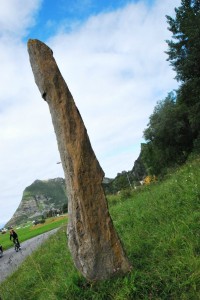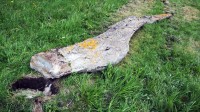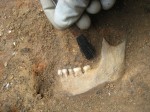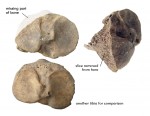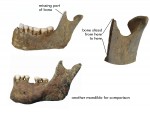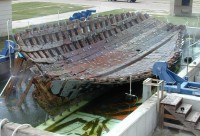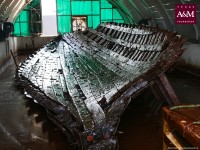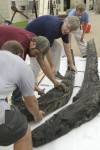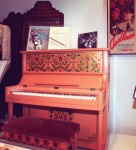 The piano on which Sam played As Times Goes By at the behest of a melancholic Ilsa and a choleric Rick in the classic 1942 movie Casablanca will be put up for auction later this year. It’s one of more than 30 pieces from the film that will be sold at Bonhams New York’s TCM Presents: There’s No Place Like Hollywood auction on November 24th, all of which belong to a single private collector. Along with the piano, the sale will feature the interior and exterior doors from Rick’s Café Américain, passports and other papers used in the movie, including the letters of transit that were hidden in this piano in a pivotal plot point.
The piano on which Sam played As Times Goes By at the behest of a melancholic Ilsa and a choleric Rick in the classic 1942 movie Casablanca will be put up for auction later this year. It’s one of more than 30 pieces from the film that will be sold at Bonhams New York’s TCM Presents: There’s No Place Like Hollywood auction on November 24th, all of which belong to a single private collector. Along with the piano, the sale will feature the interior and exterior doors from Rick’s Café Américain, passports and other papers used in the movie, including the letters of transit that were hidden in this piano in a pivotal plot point.
“Casablanca has long been one of the most beloved of Hollywood’s wartime classics and continues to be one of the most popular films in the Turner Classic Movies library,” said Dennis Adamovich, senior vice president of digital, affiliate, lifestyle and enterprise commerce at TCM, TBS and TNT. “With the addition of this extraordinary collection of Casablanca memorabilia, TCM and Bonhams’ There’s No Place Like Hollywood auction is going to be a truly unforgettable and historic event.”
“Bonhams is thrilled to represent this remarkable Casablanca collection, certainly one of the most significant film memorabilia collections still in private hands,” says Dr. Catherine Williamson, director of Entertainment Memorabilia at Bonhams.
Last year the centerpiece of the Bonham’s auction of movie memorabilia curated by the experts of Turner Classic Movies was from another of Humphrey Bogart’s iconic films, The Maltese Falcon. The lead falcon prop sold for an astonishing $4,085,000 including buyer’s premium. No pre-sale estimate for the piano has been announced yet, but Bonham’s expects it to sell for seven figures as well. There’s no guarantee, of course. The gorgeous 1940 Buick Phaeton from Casablanca‘s final scene sold for $380,000, $70,000 below the low estimate at last year’s sale.
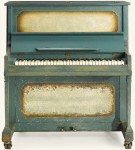 The piano used in the Paris flashback scene where Sam first plays the song for Rick and Ilsa in happier times sold for much less than its estimate at Sotheby’s in December of 2012. The estimate was $800,000 to $1.2 million, but the hammer price was $500,000 ($602,500 including buyer’s premium). Some articles have erroneously conflated the two pianos. The one for sale this November was last purchased at public auction in the 1980s and has since then been loaned to Warner Brothers Studio Museum and the Hollywood Bowl for a 2006 performance.
The piano used in the Paris flashback scene where Sam first plays the song for Rick and Ilsa in happier times sold for much less than its estimate at Sotheby’s in December of 2012. The estimate was $800,000 to $1.2 million, but the hammer price was $500,000 ($602,500 including buyer’s premium). Some articles have erroneously conflated the two pianos. The one for sale this November was last purchased at public auction in the 1980s and has since then been loaned to Warner Brothers Studio Museum and the Hollywood Bowl for a 2006 performance.
 This piano, which is salmon-colored in real life, looms large in film history as the song sung by Dooley Wilson in the role of Sam has become part of the cultural lexicon. Wilson didn’t actually play the piano (he was a drummer) so as he sang he imitated the real pianist Elliot Carpenter who was playing out of view of the cameras but in view of Wilson. Incidentally, the line most associated with the scene, “Play it again, Sam,” was never actually spoken in the movie.
This piano, which is salmon-colored in real life, looms large in film history as the song sung by Dooley Wilson in the role of Sam has become part of the cultural lexicon. Wilson didn’t actually play the piano (he was a drummer) so as he sang he imitated the real pianist Elliot Carpenter who was playing out of view of the cameras but in view of Wilson. Incidentally, the line most associated with the scene, “Play it again, Sam,” was never actually spoken in the movie.
The full auction catalogue is not yet available online, but keep an eye on this page where it will appear a month or so before the sale.
